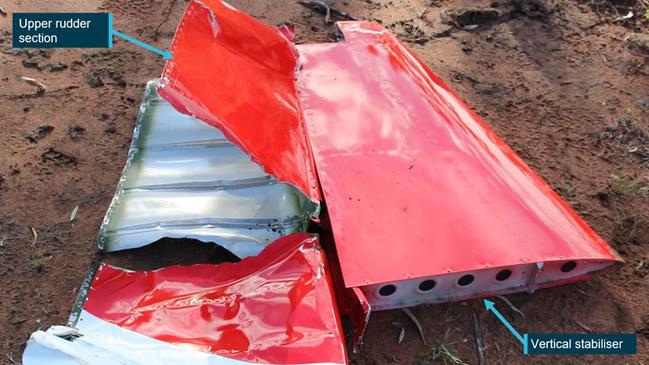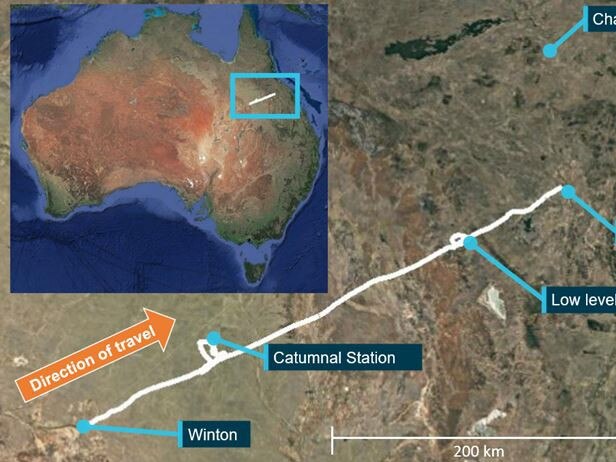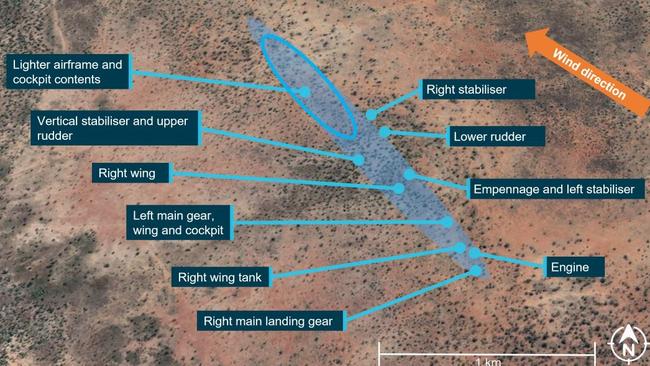Bowen-bound aircraft broke up before fatal crash: ATSB
The Aviation Transport Safety Board has released its report into a fatal light aircraft crash in northwest Queensland last year. Read what they said.

Police & Courts
Don't miss out on the headlines from Police & Courts. Followed categories will be added to My News.
The pilot of a light aircraft who died after it broke up mid-air between Winton and Bowen last year had become disorientated amid limited visibility, the Aviation Transport Safety Board has concluded.
The 74-year-old male pilot of an amateur-built RV-7A aircraft was on a flight from Winton to Bowen on April 23, 2021, accompanied by three other aircraft.
About 100 km into the flight, and over Catumnal Station, the pilot most likely encountered limited visibility, lost control several times as the aircraft dropped to within 50ft of the ground then turned back towards Winton, recorded data shows.
But 11 km into the return leg, the pilot then resumed course to Bowen; he flew between 10,000ft and 500ft above the ground, most likely to avoid weather, the ATSB said in its report released on November 9.
About 90km south of Charters Towers, the pilot likely encountered limited visibility, became disorientated and lost control as the aircraft exceeded its airspeed limitations and its rudder broke off.

“The ATSB found that the pilot departed Winton with a high risk of encountering adverse weather conditions along the planned route,” ATSB director Transport Safety Dr Mike Walker said.
“There were no operational reasons for the pilot to continue the flight to Bowen, and the pilot probably had a self-imposed motivation or pressure to continue the flight.”
The report said the pilot was “relatively inexperienced” but that the post-mortem examination revealed no signs of incapacitation, alcohol, drugs or otherwise.
“A witness that spoke with the pilot the night before the accident about the forecast weather indicated that the pilot had a strong desire to remain with the group,” the board said in its report.
At the time of the crash, the other three aircraft were about 30m south.

Entering poor weather without the training and experience to do so can rapidly lead to spatial disorientation when the pilot cannot see the horizon, Dr Walker explained.
“The brain receives conflicting or ambiguous information from the sensory systems, resulting in a state of confusion that can rapidly lead to incorrect control inputs and a resultant loss of control of the aircraft,” he said.
He pointed out that weather often did not act as the forecast predicted and that pilots must have alternatives available and be prepared to use them.
“Developing a ‘personal minimums’ checklist is an effective defence against what pilots often term as ‘push-on-itis’ or ‘get-home-itis’,” Dr Walker noted.
“A personal minimums checklist aids in identifying and managing flight risks such as marginal weather conditions. It is an individual pilot’s own set of rules and criteria for deciding if and under what conditions to fly or to continue flying based on your knowledge, skills and experience.”
The RV-7A is a low-wing, all-metal aircraft with two seats and fixed wheels, suited to cross-country flying and aerobatic manoeuvres.


